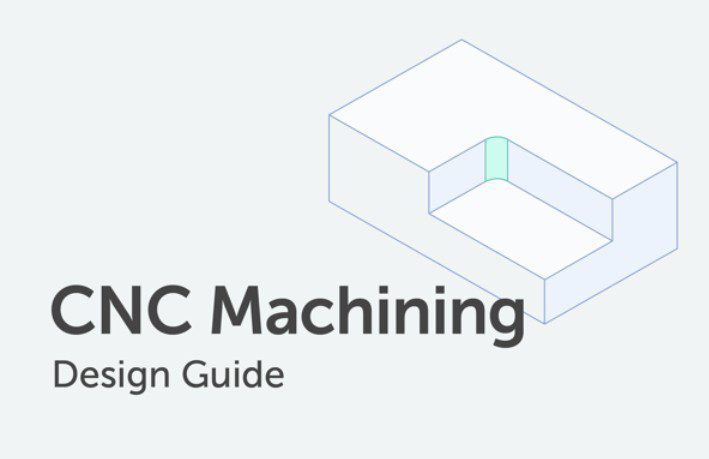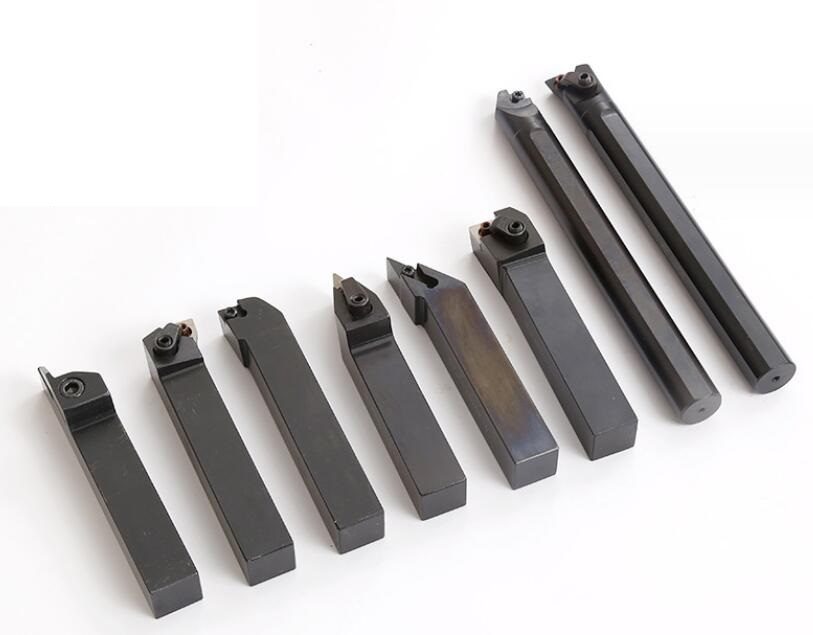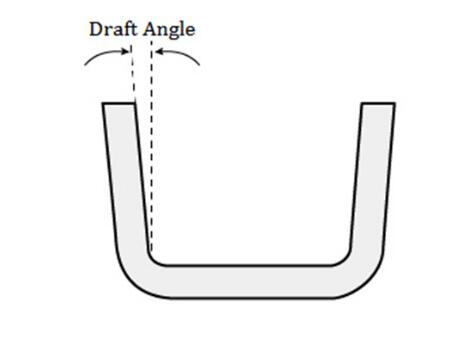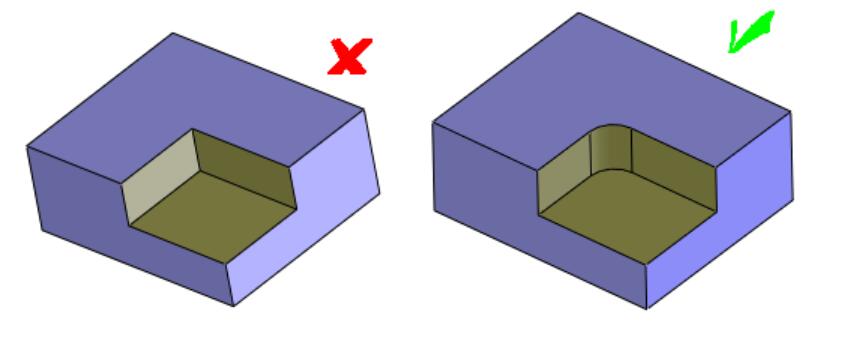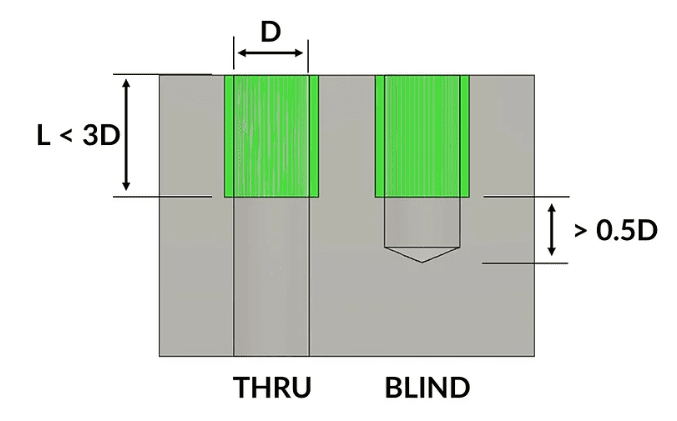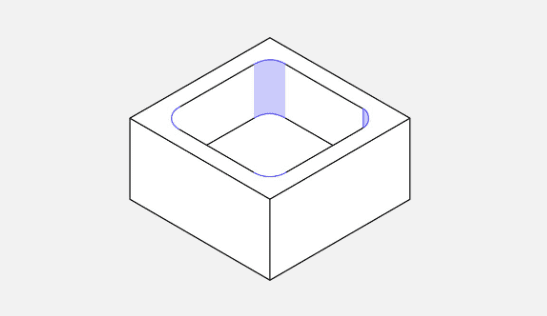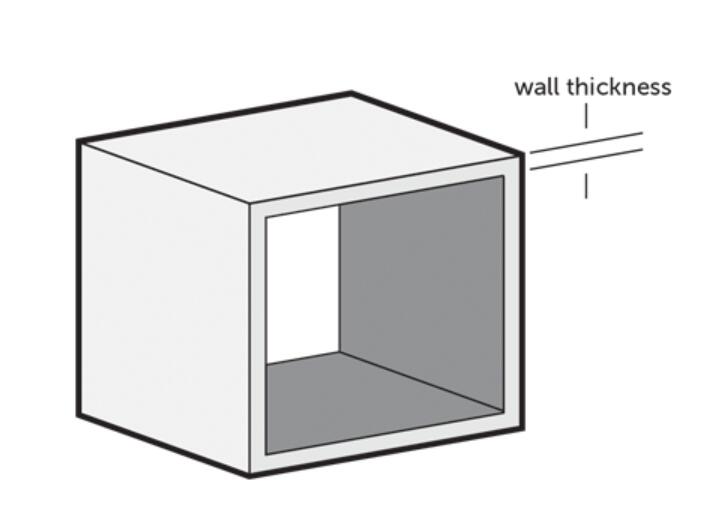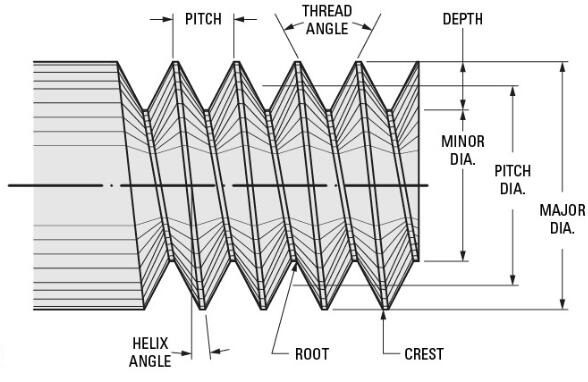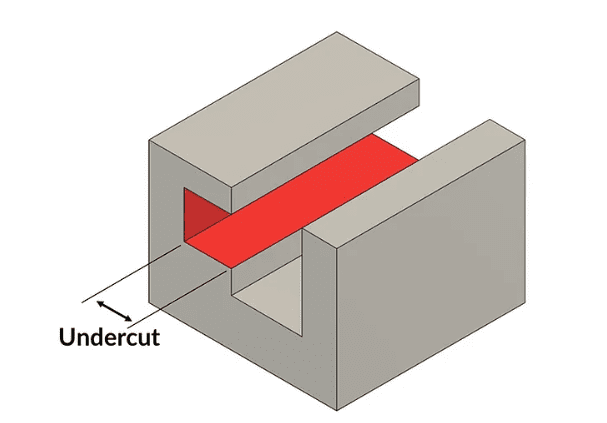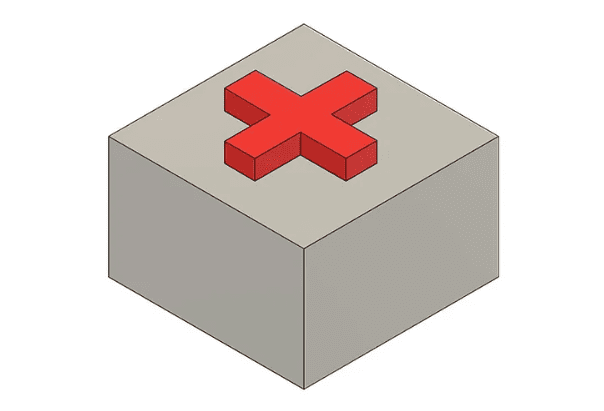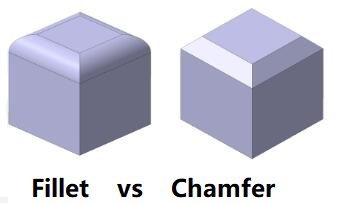Draft angles are slight tapers applied to a part’s walls that need to be released from a mold. You might ask, “Why would I care about draft angles in CNC machining, which isn’t a molding process?” Draft angles can also facilitate tool access, minimize tool wear, and enhance surface finish in CNC machining.
For the Uninitiated: A draft angle is measured in degrees and represents the angle between the vertical line and the tapered wall.
Improving Tool Life
Draft angles can extend the life of your cutting tool. When walls are perfectly vertical, the tool engages with the material at a 90-degree angle, which can be harder on the tool, especially with more rigid materials. A slight tilt allows for more efficient cutting action, reducing tool wear.
Tool Savvy: Implementing even a 1- or 2-degree draft angle can significantly affect tool longevity.
Easing Material Removal
Draft angles ease removing material, which can be particularly useful in pocketing applications. With a draft angle, the amount of material to be released decreases progressively, allowing for a smoother, more efficient cutting process.
Smooth Operator: Think of it as slicing a piece of cake. It’s easier when your knife is angled rather than perpendicular to the surface.
Cosmetic Advantages
Let’s remember aesthetics. A well-designed draft angle can also enhance the surface finish of the machined part, providing a smooth texture that’s pleasing to both the eye and the touch.
Aesthetically Yours: A smoother surface can reduce or eliminate the need for secondary finishing processes, saving time and money.
When to Skip the Draft Angle
While draft angles offer multiple benefits, they are only sometimes appropriate. A draft angle would be counterproductive for parts that require precise vertical walls for mating or assembly.
Precision Over Ease: Know when to prioritize dimensional accuracy over machining


